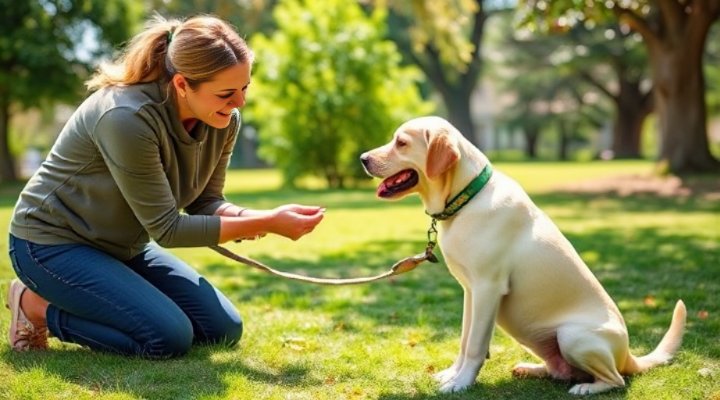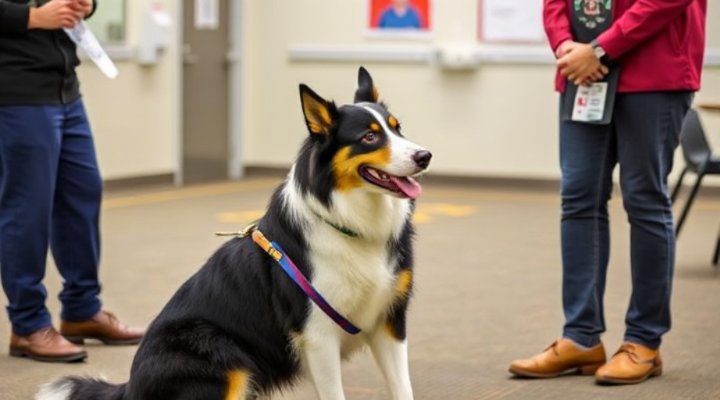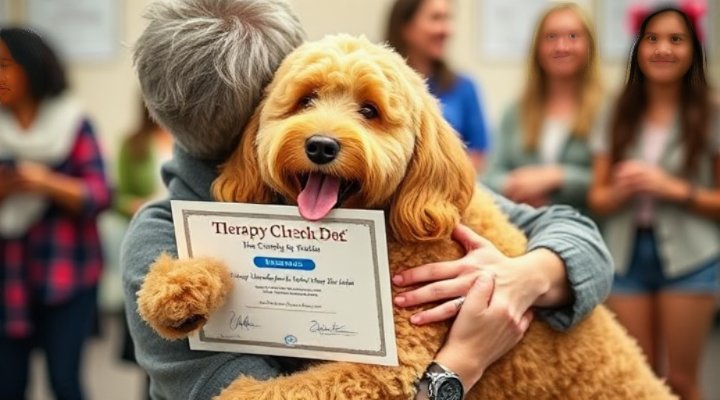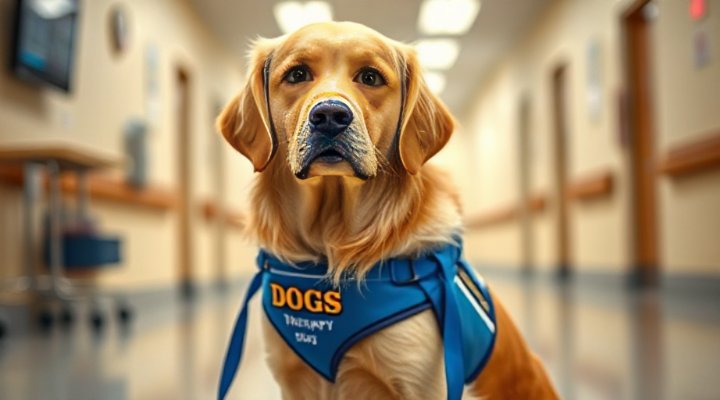Have you ever wondered how your beloved pet could bring comfort to those in need? The therapy dog certification process transforms ordinary dogs into extraordinary companions for emotional support and community service. In other words, it’s not just about having a well-behaved dog – it’s about creating a special bond that benefits others.

Understanding Therapy Dog Certification
First and foremost, let’s clarify what therapy dog certification actually means. Unlike service dogs that assist individuals with disabilities, therapy dogs provide affection and comfort to people in hospitals, nursing homes, schools, and disaster areas. Consequently, the certification process focuses on temperament and behavior rather than specific task training.
For instance, my neighbor’s Golden Retriever, Bailey, went through this process last year. Initially, we thought it would be challenging, but with proper dog obedience training and patience, Bailey became certified in just three months!

The Step-by-Step Certification Journey
So, what does the therapy dog certification process involve? Let’s break it down:
- Basic Obedience Training: Your dog must master commands like sit, stay, come, and heel. This foundation is crucial for all subsequent steps.
- Temperament Evaluation: Organizations assess how your dog reacts to strangers, loud noises, and unexpected situations.
- Public Access Test: Your dog must demonstrate good manners in various public settings.
- Handler Training: You’ll learn how to properly interact with clients and manage your therapy dog.
- Certification Exam: The final step where your dog’s skills and temperament are officially evaluated.
Meanwhile, it’s important to note that requirements may vary slightly between organizations. As a result, always check with the specific certifying body you plan to work with.

Why Certification Matters
Above all, certification ensures that therapy dogs are safe and effective in their roles. In hospitals, for example, dogs must remain calm around medical equipment and not jump on patients. Similarly, in schools, they need to be comfortable with children’s unpredictable movements.
Moreover, certification provides liability insurance in most cases. This means if you’re volunteering with your therapy dog, both you and the facility are protected. To clarify, this isn’t just about paperwork – it’s about creating safe, meaningful interactions.
If you’re interested in this path, our guide on how to train your pet to become a certified therapy dog offers additional insights.

Common Challenges and Solutions
Certainly, the therapy dog certification process isn’t without its challenges. Some dogs struggle with specific aspects like:
- Distraction tolerance: Therapy environments can be busy. Gradually exposing your dog to various stimuli helps.
- Gentle mouthing: Dogs must take treats gently. Use positive reinforcement to teach this skill.
- Long periods of calm: Sessions may last an hour or more. Build endurance through practice.
Furthermore, remember that not every dog is suited for this work – and that’s okay! The key is recognizing your dog’s strengths. For those needing help with basic training first, our comprehensive guide to dog obedience training is an excellent resource.

Maintaining Certification and Beyond
Subsequently, after certification, most organizations require:
- Annual re-evaluations
- Continued training
- Health checks
- Vaccination records
Likewise, consider joining local therapy dog groups for support and volunteer opportunities. These communities often share valuable tips and organize events.
In conclusion, the therapy dog certification process opens doors to rewarding experiences for both dogs and handlers. Whether you’re aiming to help in hospitals, schools, or disaster relief, the journey begins with proper training and certification.
For more information on related topics, explore our articles on emotional support dog training and becoming a certified therapy animal.
Related Keywords: therapy dog requirements, how to certify a therapy dog, therapy dog training near me, therapy dog vs service dog, best breeds for therapy dogs

